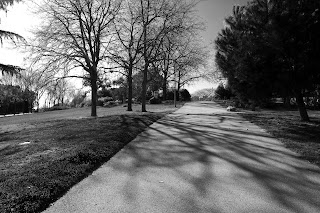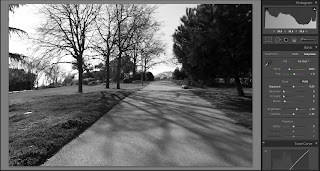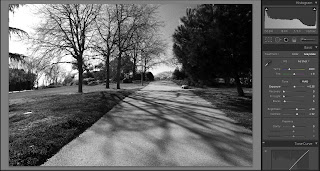
When I created this blog, I wanted to write articles about photgraphy alone, but several users have expressed their interest in digital post-processing too, so I'm going to start a series of articles about basic post-processing techniques and programs.
Probably the most known post-processing effect in digital photography is converting to black and white. This may seem like it's an easy process but doing it well may require some practice.
What is Black and White good for? Sometimes the colors in an image don't express anything or don't serve to create the effect we want, in those cases converting into black and white can be the perfect post-processing effect, freeing our image of all those distracting colors.
First I will explain how to do this effect if you're using lightroom, which I recommend and will talk about in future posts.
We'll take this image as an example.
Probably the most known post-processing effect in digital photography is converting to black and white. This may seem like it's an easy process but doing it well may require some practice.
What is Black and White good for? Sometimes the colors in an image don't express anything or don't serve to create the effect we want, in those cases converting into black and white can be the perfect post-processing effect, freeing our image of all those distracting colors.
First I will explain how to do this effect if you're using lightroom, which I recommend and will talk about in future posts.
We'll take this image as an example.
Open it in developing mode in Lightroom and click on grayscale and you get this result.

Now, you might be happy with this result but it's also possible that this is not the mood you were looking for in the image.
To me, for example the sky and the grass looked too bright. To change this you can go to the channel mixer and change the luminosity of those specific tones. This will make everything with that specific tone to appear darker or brighter in the final image. I changed blue, green and yellow and this is how it looked like in the end.
To me, for example the sky and the grass looked too bright. To change this you can go to the channel mixer and change the luminosity of those specific tones. This will make everything with that specific tone to appear darker or brighter in the final image. I changed blue, green and yellow and this is how it looked like in the end.

Lastly, you may want to change some of the general settings, I modified exposure and contrast, it's always recommendable to have the contrast lever higher than the brightness one.

This is the end image:

If you want to reproduce the results in other Image editors like Photoshop or the GIMP you have to look for the channel mixer feature (Image -> Adjustments -> Channel mixer, in Photoshop), then select grayscale and make the adjustments you like like I did in this tutorial.
In the next tutorial I'll teach you how to use selective color to make the subject stand out. Stay tuned and keep experimenting!
In the next tutorial I'll teach you how to use selective color to make the subject stand out. Stay tuned and keep experimenting!
No comments:
Post a Comment